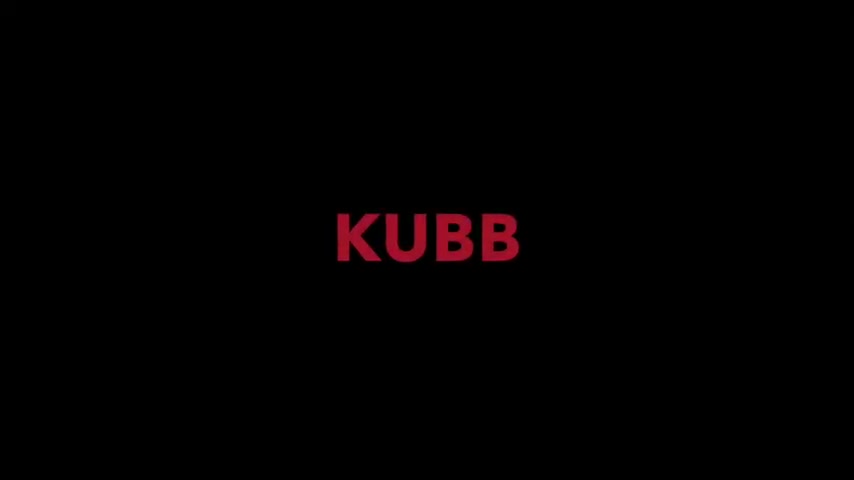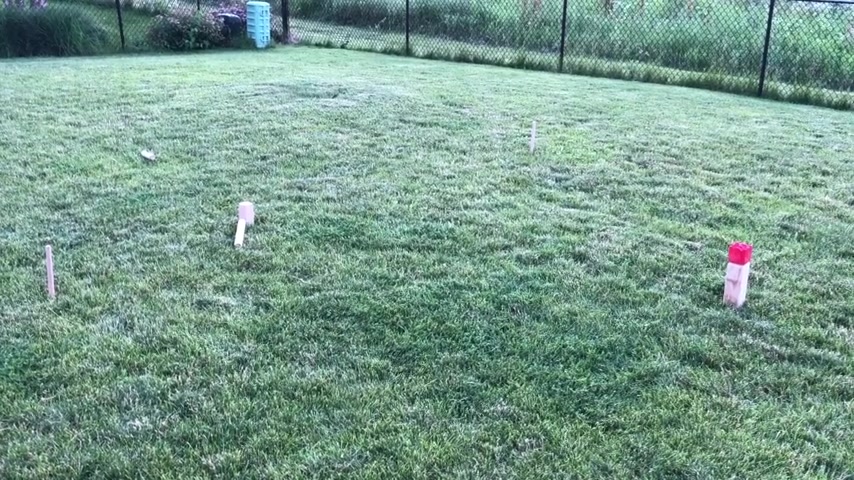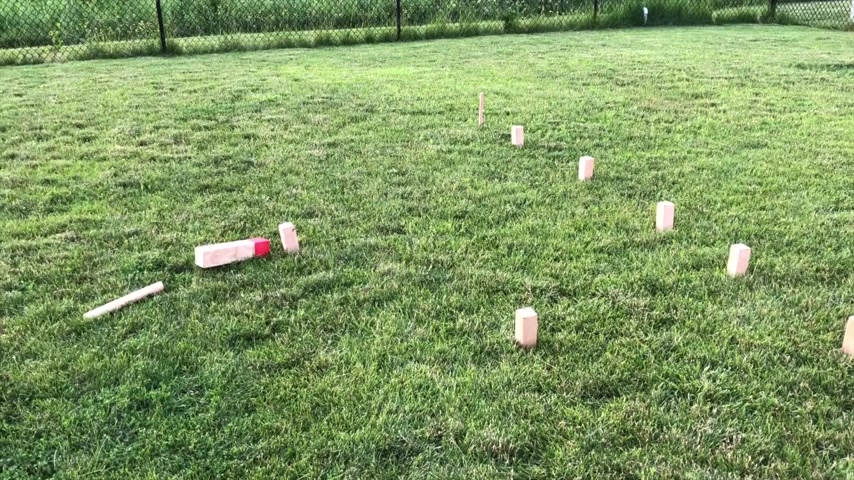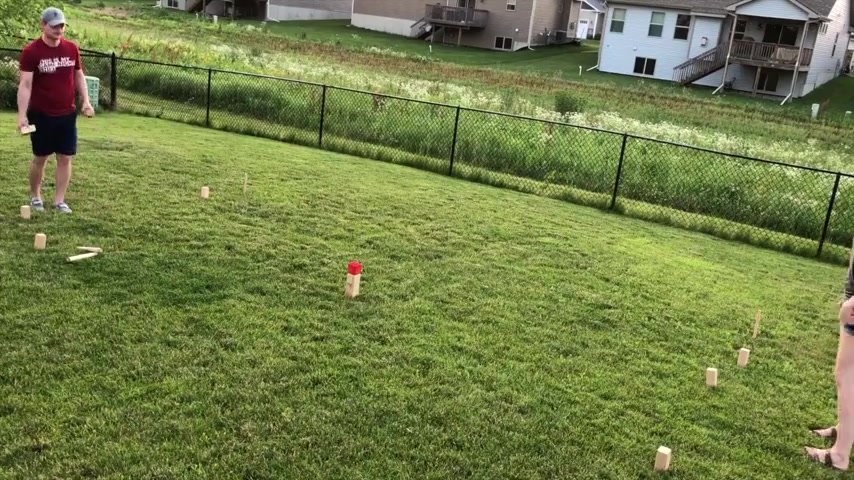https://www.youtube.com/watch?v=yXduBd1ewdo
How To Play Kubb

Hello and welcome to how to play Kube presented by gather together games dot com .
This video will cover how to play the yard game cube .
The video will start with the general concepts and they get into more of the details for the game .
The video will conclude with an example round of cube .
The game is played with 2 to 12 players to play .
You will need a cube game set that includes boundary stakes , throwing batons , cubes and a king cube set up the cube playing area by placing the boundary stakes , 5 m apart on the baselines and 8 m apart on the sidelines , five cubes are placed on each baseline and the king cube is placed in the middle of the playing area .

The object of the game is to knock down all the cubs on the opposing side of the playing area and then knock down the king cub to win .
Before the game begins , a player from each side will throw a baton toward the king cob .
The player closest to the king gets to go first in the game .
The winner with the closest baton to the king will start the game by throwing all six batons with the goal of knocking down as many Cubs as possible .
A player will throw all six batons when playing one on one .
If there are multiple players per team , the batons will be split between the players as evenly as possible .
Any coops that are knocked over are thrown to the opponents side of the field .
The Throne Cobe is set up right where it came to rest .
Any coop thrown is known as a field coop .
All field cubes must be knocked over before going for a cube on the baseline .
The batons are picked up and it is the second players or teams turn to throw .

Teams will take turns throwing batons and sending knocked down Cubs to the other side of the field .
Once a team has all the coops knocked down on the opposing side of the field , the king coop can be attacked .
The game is won when the king cob is knocked down , the baton must be thrown end over end and underarm .
A team gets to throw the batons from the closest cube .
For example , this field Cobe was not knocked down on the previous team's throws .
So the cube's position on the field becomes the new line to throw from knocked down Cubs are always thrown from the baseline .
If a Cobe is thrown out of bounds , it is known as a fault .
After two fault throws for a cube , the opposing team will place the cube anywhere on their half of the field .
A field Cobe must be at least one baton length away from the king .
Field cobs must be knocked down before baseline coops .
If a baseline coop is knocked down before a field coop , the baseline cobe is stood back up .

This position is an example of how Stockfish has ruined one aspect of chess .
Let me explain what I mean by that .
This was a puzzle that was created in 1959 by a man named Victor Evanov .
If I'm pronouncing that correct correctly , he was a Russian composer , created over 100 studies and this particular one was a first prize winner .
So they used to have these composing tournaments where different uh chess players would submit composed problems .
They had judges , the judges would look at all the different puzzles and then they would decide , OK , this is the best one and this one won first prize in 1959 .
So there was something special about it which I'm gonna show you in just a second .
However , when you plug this position into stockfish , stockfish finds a flaw with the solution .
It says , nope , it doesn't work .
And , and you know , that is something that would not have happened back in 1959 .
OK .
Chest engines , I believe they actually were invented .

My opponent goes and is only able to hit two of the field cubes .
I throw the cubes back over .
I now get to throw closer by standing in line with the field cobe still on my side of the field .
The game continues this way with my opponent and me taking turns .
I am able to knock down all the remaining Cubs and the king Kub to win the game that wraps up how to play Kube .
If you found this video helpful , give it a thumbs up and get more game tutorials by subscribing to our channel .
Gather together games .
Thanks for watching .
Are you looking for a way to reach a wider audience and get more views on your videos?
Our innovative video to text transcribing service can help you do just that.
We provide accurate transcriptions of your videos along with visual content that will help you attract new viewers and keep them engaged. Plus, our data analytics and ad campaign tools can help you monetize your content and maximize your revenue.
Let's partner up and take your video content to the next level!
Contact us today to learn more.